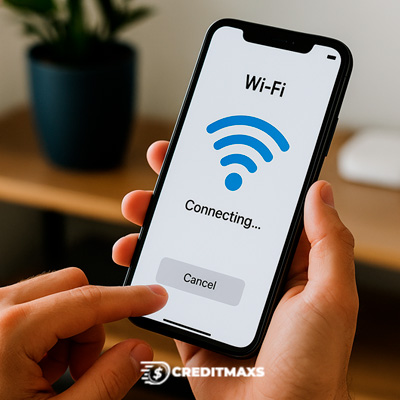Unlock the full potential of fiber 500 internet speed and enjoy next-level connectivity
Don’t settle for lag—discover how fiber 500 internet speed delivers faster downloads, smoother video calls, and reliable connections in the U.S.
Enter fiber 500 internet speed, a mid-tier fiber-optic plan that delivers symmetrical speeds up to 500 Mbps for downloads and uploads.
This article will break down the advantages, best use cases, comparisons to other speeds, and where to get fiber 500 plans in the U.S.
Discover if Starlink delivers the speed and low latency gamers need—explore its impact on online play and see if it’s the upgrade for you.
Know what is fiber 500 internet speed and how does it work 🌐

Fiber 500 is a broadband service that delivers up to 500 Mbps for both uploads and downloads, thanks to the efficiency of fiber-optic technology.
Unlike traditional cable, fiber relies on light signals traveling through thin glass strands, ensuring faster speeds, lower latency, and consistent performance.
- Download speed: Up to 500 Mbps.
- Upload speed: Up to 500 Mbps, crucial for video conferencing and cloud storage.
- Latency: Typically below 10 ms, ideal for online gaming and real-time communication.
- Connection type: Symmetrical, meaning equal performance in both directions.
Compare top internet providers in 2025 for speed, reliability, and price!
View how fiber 500 compares to cable and DSL 📊
| Type | Download | Upload | Best Use Cases |
| DSL | 10–40 Mbps | 1–5 Mbps | Basic browsing, email |
| Cable | 100–600 Mbps | 10–30 Mbps | Streaming, casual gaming |
| Fiber 500 | 500 Mbps | 500 Mbps | 4K streaming, heavy gaming |
Learn why fiber 500 internet speed is ideal for U.S. households 🏠
Fiber 500 is designed to meet the needs of medium-to-large households where multiple users are connected simultaneously.
It’s an excellent choice for families, roommates, or individuals who rely heavily on high-speed internet for both entertainment and productivity.
Best scenarios for fiber 500 use 📺
- Streaming: Supports multiple 4K streams without buffering.
- Online gaming: Low latency ensures minimal lag in competitive play.
- Work from home: Smooth video calls, fast cloud uploads, and stable VPN connections.
- Smart homes: Handles dozens of connected IoT devices seamlessly.
- Content creation: Ideal for YouTubers, podcasters, and designers who upload large files.
Benefits of fiber 500 internet speed for daily life ⚡
Unlike entry-level plans, fiber 500 offers a noticeable improvement in both performance and reliability. Let’s explore the biggest benefits.
Faster downloads and uploads 🚀
A 2 GB HD movie can be downloaded in less than a minute. Uploading a 1 GB video file to the cloud takes just a few seconds—game-changing for professionals who work with large media files.
Superior video conferencing 💻
With symmetrical speeds, video calls remain smooth even when multiple people are on camera. Fiber 500 eliminates pixelation and audio delays, creating a professional communication experience.
Multi-device capacity 📱
Households often have more than 10 devices connected at once. Fiber 500 ensures laptops, smartphones, gaming consoles, and smart TVs can operate without bandwidth issues.
Lower latency for gamers 🎮
Competitive gamers gain a real advantage with lower ping times. Fiber 500 keeps latency under 10 ms, meaning commands and actions register almost instantly.
Experience record-breaking reveals, tech innovations, and fan zones at Gamescom 2025—explore highlights of the global celebration.
Compare fiber 500 internet speed with higher and lower tiers 📶
Fiber 500 sits comfortably between entry-level and gigabit speeds. Here’s how it stacks up.
| Speed Tier | Download/Upload | Who it’s for |
| Fiber 200 | 200/200 Mbps | Light users, basic browsing. |
| Fiber 500 | 500/500 Mbps | Families, remote workers, streamers. |
| Fiber 1 Gig | 1000/1000 Mbps | Large families, advanced setups. |
Read providers offering fiber 500 internet speed in the U.S. 🛒
Several major ISPs in the U.S. provide fiber 500 plans. Availability depends on location, but these companies are among the top providers:
- AT&T Fiber: Offers 500 Mbps plans with unlimited data and no annual contracts.
- Verizon Fios: Provides symmetrical 500 Mbps service with strong reliability.
- Frontier Fiber: Known for competitive pricing and wide availability in suburban areas.
- CenturyLink Fiber: Provides 500 Mbps where available, often with price-lock guarantees.
- Local ISPs: Many regional providers also offer fiber 500 tiers in smaller cities.
Why fiber 500 internet speed strikes the perfect balance 🚀
Fiber 500 is more than enough for the average American household. It provides consistent, symmetrical performance for all digital needs—from high-definition streaming to cloud-based work.
For most, it is the sweet spot between affordability and future-proof performance.
FAQ ❓
- What is fiber 500 internet speed good for?
- It’s ideal for streaming, gaming, remote work, and smart homes with multiple connected devices.
- How many devices can fiber 500 support?
- It can handle 10–20 devices simultaneously without performance issues.
- Is fiber 500 faster than cable internet?
- Yes, fiber offers lower latency and symmetrical speeds compared to cable.
- Which providers offer fiber 500 in the U.S.?
- AT&T, Verizon, Frontier, CenturyLink, and several regional ISPs provide it.
- Is fiber 500 enough for gamers?
- Absolutely, its low latency and high bandwidth make it excellent for competitive online gaming.
